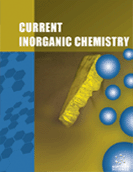Abstract
Background: Metal-organic frameworks (MOFs) have attracted much attention in recent research due to their potential applications in many areas, such as gas storage, carbon capture, catalysis, drug delivery, and so on. Despite their highly promising features, this class of materials suffers from poor chemical stability. Recently developed Zr-based MOFs have shown excellent stability and one of the challenges this field is facing now is the difficulty of integration of the MOFs in practical devices. Preparation of thin film is one of the approaches that can effectively immobilize the MOFs on surface for different applications.
Objectives: The main objective of this study was to prepare thin films of recently developed Zr-based MOFs (UiO-66, UiO-66-NH2, UBMOF-8, and UBMOF-9 and their mixed-linker analogues) on conductive FTO substrate for potential future applications.
Methods: Solvothermal approach was used to fabricate uniform crack-free microscopic thin films of Zrbased MOFs. Careful control of reaction conditions successfully led to the facile synthesis of Zr based metal-organic frameworks (Zr-MOFs) with substantial thermal stability. Taking advantage of mixedlinker approach, a series of Zr-based MIX-MOFs consisting of two isoreticular linkers, benzene-1,4- dicarboxylate (BDC) and 2-amibobenzene-1,4-dicarboxylate (ABDC), was successfully obtained. Further exploitation of mixed-linker approach onto other isoreticular system, 4,4′-stilbenedicarboxylate (SDC) and 2,2′-diamino-4,4Ꞌ-stilbenedicarboxylate (DASDC) effectively led to synthesis of MIX-MOFs with adjustable proportion of the two linkers.
Results: A new facile solvothermal route for the synthesis of high-thermally stable Zr-based MOFs, namely UiO-66, UiO-66-NH2, UBMOF-9 and UBMOF-8 have been reported. Based on the nonfunctionalised/ functionalised mixed-linker systems of benzene-1,4-dicarboxylate/ 2-amibobenzene-1,4- dicarboxylate (BDC/ABDC) and 4,4′-stilbenedicarboxylate/ 2,2′-diamino-4,4′-stilbenedicarboxylate (SDC/DASDC), two series of mixed-linker Zr-based MOFs (MIX-MOFs), MIX-UiO-66 and MIXUBMOF have been synthesized with variable molar ratio of the two linkers, respectively. Tuning the thermal stability of MIX-UiO-66 and MIX-UBMOF series has been achieved by controlling the molar ratio of BDC/ABDC and SDC/DASDC, respectively. Thermal stability has been successfully enhanced by increasing the degree of substitution of functionalised (amino-) linker by the non-functionalised linker. Subsequently, reproducible and efficient solvothermal methods have been developed to construct uniform and fracture-free microscopic thin films of UiO-66, UiO-66-NH2, UBMOF-9, UBMOF-8, MIX-UiO-66-(3:1) and MIX-UBMOF (1:1) with exceptional crystallinity and adjustable thickness on electrically-conductive fluorine-doped tin oxide (FTO) substrates. All thin films exhibit high stability comparable to the bulk materials. Synergic utilisations of FT-IR and Raman spectroscopies have been used to get quantitative insight on both bulk material and thin films of the MIX-MOFs.
Conclusion: This work reports the new approach of developing thin films of Zr-based MOFs on conductive FTO stubstrate and successful use of the mixed-linker approach to control the physical properties of the developed films.
Keywords: Zirconium, metal-organic framework, FTO, thin films, mixed-linker, UiO-66, UBMOF, MIX-MOF.
 27
27 2
2 1
1 1
1


